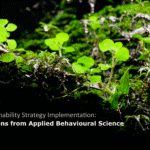I often hear, “ESG is just a tick-box exercise. We follow the checklist, then job done, right?” While it is true that ESG ratings and due diligence processes often rely on checklists, these should not dictate a sustainability strategy, especially when it’s indisputable that ESG scorecards can be gamed. However, let’s set aside idealism for a moment and take a practical look at how ESG surveys play a role in driving sustainability impact.
ESG scorecards and ratings were born to satisfy investors’ and other stakeholders’ desire to understand and compare corporate sustainability risk and impact. A new industry then emerged offering services to grade and rank a firm’s environmental and social credentials, resulting in the current mixed-bag landscape of surveys and questionnaires that vary in quality and rigour.
For firms that don’t typically disclose much for regulatory compliance, an ESG scorecard or rating request is often their first interaction with a whole new set of sustainability expectations. If it’s part of an RfP requirement from a major supply chain partner or investor due diligence, it will capture the attention of the senior team especially when the financial implications are too significant to ignore.
But beware of the trap of believing a veneer of nice words about being sustainable and pushed-out future targets is sufficient because although for some surveys this is entirely true, it belies future financial risk from not embedding sustainability in operations.
To start, the scorecards rarely assess the opportunity from sustainability, whereas this is critical to a good sustainability strategy. Using Porter’s Five Forces gives a framework for analysing how a firm can respond to potential disruption to supply chains, or counter threats of sustainable innovation by new entrants and react to changing consumer tastes.
And the scorecards are very questionable when it comes to the S of ESG. They are particularly ‘tick-box’ for people data, especially on diversity or gender pay gap. These data asks invariably raise issues at the board level as attitudes to people policies and targets vary significantly worldwide. Boards can refuse to engage with targets or may opt for a compromise solution by setting goals so far removed in time that they are of little consequence. Additionally in some jurisdictions, collecting diversity data is illegal and there is the current threat of litigation in the U.S. to firms with published Diversity, Equity and Inclusion (DE&I) targets and policies.
Nevertheless, a firm has a responsibility to have a people strategy founded on an analysis of risk, reward and responsibility, just as for the environmental strategy. Translation of this strategy into data for ESG surveys is a genuine issue, only solved by the firm’s leaders agreeing on the importance of the ESG rating versus the perceived risks from disclosure.
The ratings are also getting better through work by activists publicising deficiencies and hypocrisy by calling out firms with exemplary ESG credentials on paper but not in practice. Similarly, the hitherto obfuscated methods used by ESG ratings firms to judge performance are being challenged so that going forward it will not be sufficient to insert a number that a computer can read, regardless of its value.
ESG scores therefore may not always be quite what they seem and may obscure the true level of a firm’s sustainability maturity. To fully understand the sustainability capabilities of a firm requires investigating where it is on its sustainability journey. This demands honest conversations and an openness to viewing sustainability as a journey, something checkboxes inherently struggle to capture. The relatively new theme of transition planning goes some way to addressing these deficiencies.
So rather than being led by the checklist, a firm should be led by a sustainability strategy that delivers an ESG rating or score as an output. Similarly, ratings should not be confused with being an outcome, because they don’t indicate the impact value of a sustainability strategy. But if the ESG scorecard does the valuable job of being a catalyst for change, then I’m good with that, a start is a start.







Leave a Reply